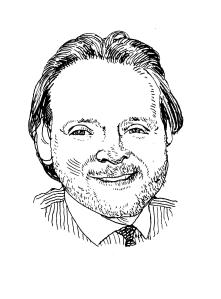 Ask most apartment tenants or tenant advocacy organizers to describe the typical New York City landlord and they would likely describe Mr. Potter, the mean-spirited, grumpy old man played by Lionel Barrymore in Frank Capra’s 1946 holiday classic It’s a Wonderful Life. In the movie, Mr. Potter is the perfect villain and counterpoint to the virtuous hero, George Bailey, played by Jimmy Stewart.
Ask most apartment tenants or tenant advocacy organizers to describe the typical New York City landlord and they would likely describe Mr. Potter, the mean-spirited, grumpy old man played by Lionel Barrymore in Frank Capra’s 1946 holiday classic It’s a Wonderful Life. In the movie, Mr. Potter is the perfect villain and counterpoint to the virtuous hero, George Bailey, played by Jimmy Stewart.
That perception should change tangibly based upon a new study released last week by Urbanomics, the acclaimed economic consulting firm. The study is an expanded survey of owners of rent-stabilized buildings in New York City. The Community Housing Improvement Program (CHIP), with the cooperation of the Rent Stabilization Association (RSA), retained Urbanomics to prepare the survey to better understand who rent-stabilized owners are as well as the problems they face. The survey was performed by the polling firm Business Beanstalk, which had no direct contact with CHIP or RSA.
This highly comprehensive study is the first of its nature in more than 25 years and consists of cumulative data and information based on a sampling of 50,000 rent-stabilized buildings. The study provides strong evidence to dispel the Potter-like characterization that rent-stabilized owners are primarily large corporate interests, speculators, frequent “flippers” of properties or absentee owners who make obscene amounts of profits, unfairly taking advantage of their tenants.
In fact, the survey shows that a typical owner is a long-term investor and an immigrant managing his or her own properties through a family business, living in or near the properties and dependent upon the rental revenue for a significant portion of his or her income. If we take a closer look at some of the myths about multifamily building ownership, using statistical data from the survey, the results are impactful.
Myth No. 1: Owners are primarily large corporate interests. In actuality, 48.2 percent of all owners are immigrants or children of immigrants. In Queens, this percentage rises to 58.8 percent. Interestingly, nearly 40 percent of owners are minorities and 75.1 percent of owners either own individually or are part of a family business. In the Bronx, this percentage increases to 83.7 percent. Moreover, the survey found that 39.8 percent held 10 or fewer total units and 76.1 percent owned fewer than 50 total units.



